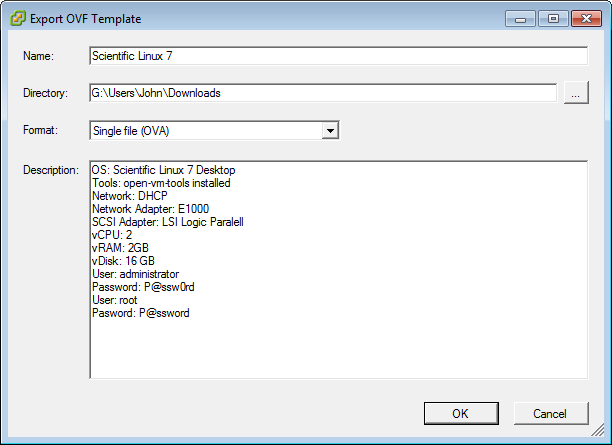

This is the filename on the machine I’m running the OVF Tool on.

If the VM is in a resource pool or folder, you’ll need to specify, but if the VM is in the root resource pool of the host like mine, you can just type the name. There’s a number of different ways to use this tool, including pointing at a datastore, searching using queries, etc.
#Vm fail to export as ovf vmware password#
You could also include a password if you’re scripting and don’t care if it’s in clear text. If you were trying to export a Workstation VM, you could just as easily use C: for instance. This is the path specific to ESXi/vCenter. I just put it in so that I wouldn’t have to type ‘yes’ to accept the SSL cert thumbprint.

If you’re wiser than me, you might want to leave this flag out. I don’t have any of that garbage to test this on 😉 –noSSLVerify ovftool -noSSLVerify ~/Desktop/vCenter.ova.
#Vm fail to export as ovf vmware full#
Here’s the full command I used in my lab. I will break down the arguments individually, since this won’t be exactly the same for you. For me on Mac (using Fusion): /Applications/VMware Fusion.app/Contents/Library/VMware OVF Toolįor Windows, it should be: C:Program FilesVMwareVMware OVF Tool Export Locate OVF Tool tool from the command line. Cheers! Download OVF Toolĭownload OVF Tool installer from the following link: If you have an occasion to export large amounts of VM’s to OVA’s like I currently do, you may find the following useful for creating a script to do just that.


 0 kommentar(er)
0 kommentar(er)
